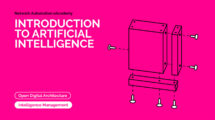Words: Hans Brunner, Principal Research Engineer, Optical & Quantum Laboratory, Munich Research Center, Huawei
Quantum key distribution (QKD) has emerged as a viable and robust option for enhancing the security of optical network infrastructure. From the network-design point of view, a key distribution service has to adapt to the requirements of the network rather than impose restrictions. QKD should be operated as a communication add-on to mirror the role of security in communication and be, in this sense, seamlessly integrable in pre-existing communication environments.
The advantages of Continuous-Variable QKD (CV-QKD) can be exploited to ease the integration of QKD in metropolitan-area telecommunication networks. This technology provides more flexibility compared to other QKD classes and has an inherently higher tolerance to other signals on the same fibre. Flexible QKD devices should allow at least a standardised and changeable configuration of the wavelength and peer to break the inseparable/atomic QKD links (sender-receiver pairs, which are locked to each other).
The Munich Research Center of Huawei has developed compact CV-QKD prototypes with several key features for facilitating network integration. Among these features are the coverage of typical metro link losses with automatic adaptation to the channel conditions as well as in-channel synchronisation, which reduces the spectral needs to a single dense-wavelength-division-multiplexing (DWDM) channel. In many situations, this fully C-band tunable channel can simply be connected to a free multiplexer port of an existing and populated DWDM infrastructure. Any-to-any connectivity between many QKD transmitters and receivers can reduce the number of devices needed, while dynamic protocol switching allows to address different security requirements and cryptographic tasks.
These prototypes and their network features were demonstrated in operational environments in the Madrid quantum testbed. 36 different, loop-free QKD links could be established in a network with only five QKD senders and five QKD receivers by interconnecting the modules through reconfigurable optical add-drop multiplexers. The QKD modules could be connected to existing optical-transport-network links of different vendors without any downtime or disruption of the previously installed traffic. Integration with key stores and hardware encryptors was successfully tested. Specific cryptographic protocols could be activated for tests with oblivious transfer and secure multiparty computation.
The urgency of quantum resilience and the maturity of QKD create demand for devices that adhere to the needs of network providers and simplify network integration.

Read or download the full magazine here







